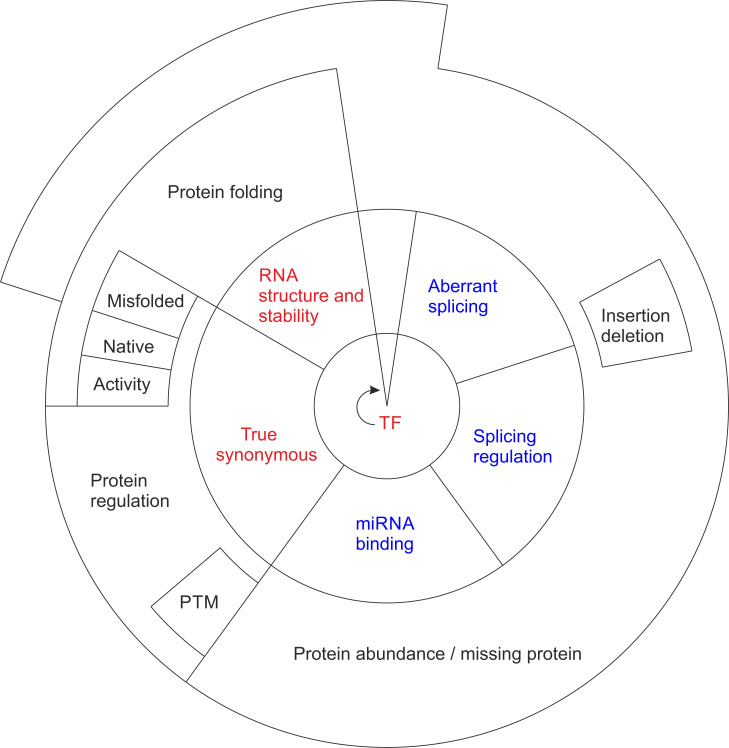Fig. (1).
Classification of synonymous (red) and unsense (blue) variants and their consequences at DNA (center), RNA (middle), and protein (outer circle) levels. The inner circle indicates DNA variants, which although synonymous can affect transcription factor (TF) binding, and thereby protein production. The middle circle depicts mRNA level alterations, and on the outer ring are shown the protein level effects. At mRNA, synonymous variants are either true synonymous or those that affect RNA structure and stability. Synonymous variants at the protein level have either native or misfolded structure or affect protein activity. Changes to protein abundance are common. PTM indicates post-translational protein modification. The three categories of unsense variants (blue) affect aberrant splicing, splicing regulation, or miRNA binding. Many of these variants have an effect on protein abundance, and often there is no protein at all. Aberrant splicing and splicing regulation affecting variants can lead also to protein insertion or deletion, if the variant position is close to the C-terminus or the mRNA is not degraded by nonsense-mediated decay.

